We were recently asked by a physician about what is a “community/practice profile” and why do we do this at Pacific Comapnies.
The conducting of a community/practice profile is perhaps the single most important ingredient to our success as permanent physician recruiters. We track our performance with each placement we make and year after year our “closing ratio” is far superior to the industry standard. A closing ratio is among the most important metrics of performance for a physician search firm. A closing ratio measures how many unique candidate interviews take place before a Physician candidate accepts an offer. Since this is a “buyer’s market”, candidates have numerous options from which to choose. The industry standard of interviews to placement is 7 to 1. Pacific Companies is 3 to 1. This is essentially a report card on how effective we are in creating a successful match between a candidate – physician or advanced practice provider and a client location.
We attribute this high rate of success to our process and integral to our process is the community/practice profile.
The primary purpose of the profile is to gain a clear understanding of the entire opportunity allowing the recruiter to effectively share pertinent details with interested candidates so the candidate is well informed about an option before ever traveling to that location.
Additionally, many physicians looking to relocate will select a practice based on location. Part of a successful profile is to visualize the community and to learn what the community has to offer. This is best accomplished with “boots on the ground”. Something as simple as eating at a local restaurant can add invaluable insight to the profile and enable the recruiter to better and more accurately depict the community.
Physicians and their spouses commonly ask the recruiter if they have been to the community and by answering affirmatively to that question and through sharing personal experiences the recruiter and by extension the practice gain enormous credibility with the candidate, particularly as compared to practices that are represented by recruiters who have not personally evaluated the practice and conducted a community/practice profile.
The same theory applies to conducting the practice portion of the profile. Through the process of conducting a comprehensive evaluation of the practice the recruiter is able to differentiate the “opportunity” from similar opportunities. Meeting with staff and touring the office and hospital allows our recruiters to describe the facility first hand, share digital images with a physician and learn more about the practice from a contextual point of view. Conducting a practice profile in person allows the experienced recruiter to gain insight that would otherwise not be offered in a conversation over the phone. Even a few minutes with a key staff member can provide a valuable nugget of information about the practice pertaining to patient volumes, customer service, a unique process or piece of equipment or a staff member’s level of expertise.
In summary our process works and our successful recruitment of physicians, creating a a match that will last benefits both the client and the physician candidate.
